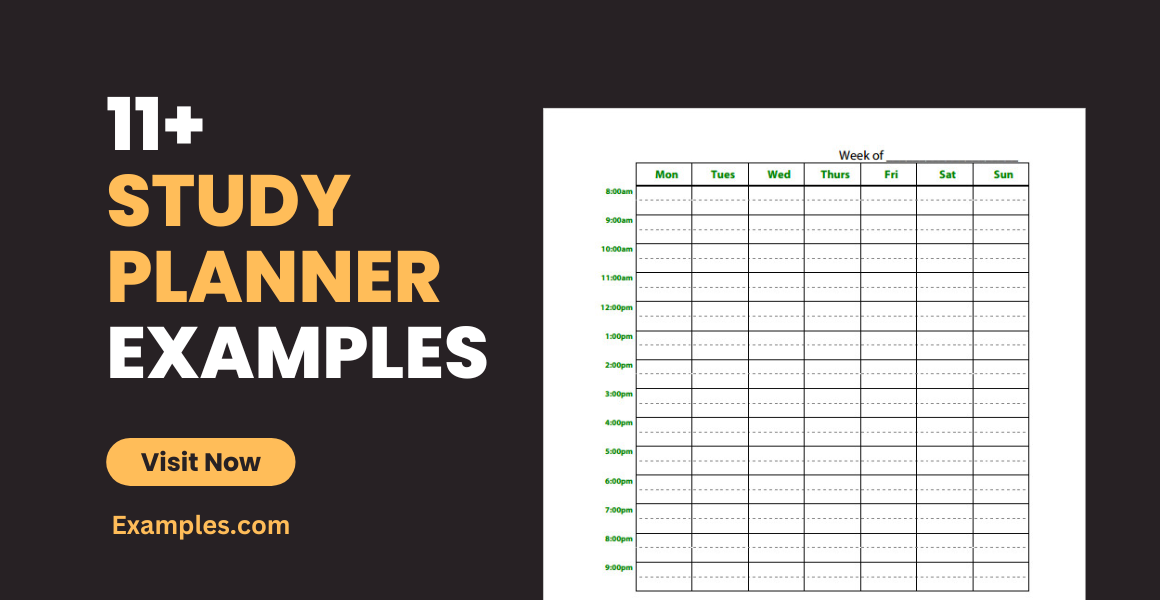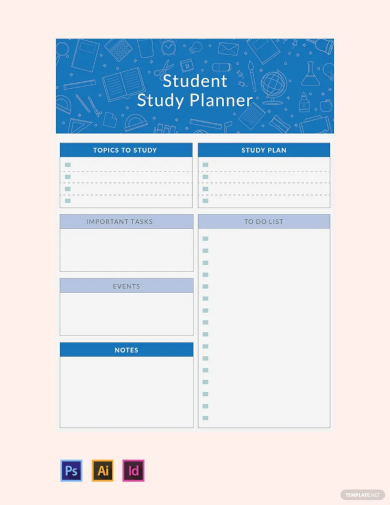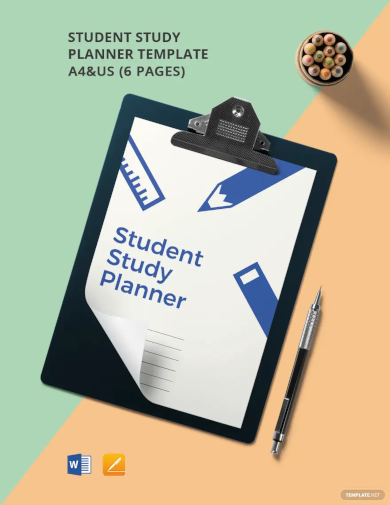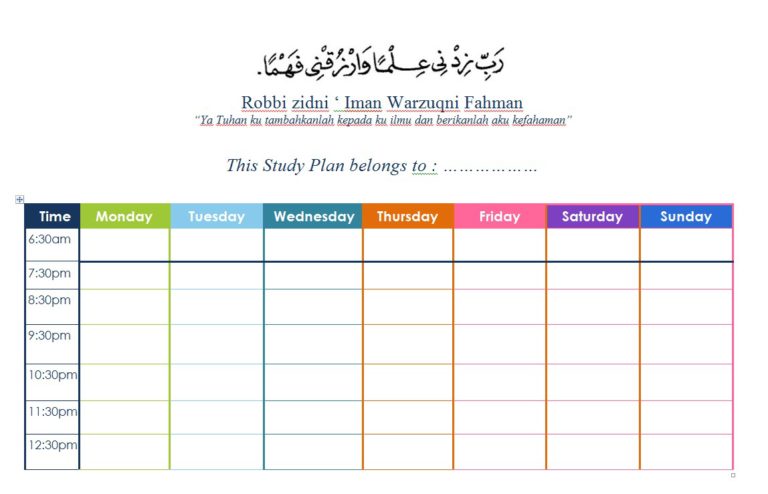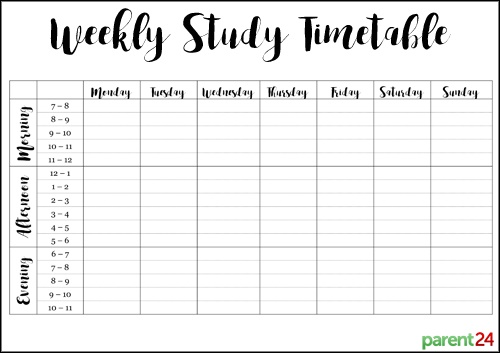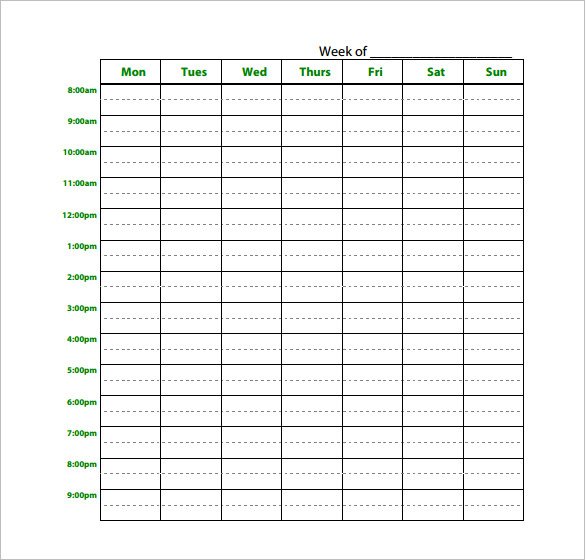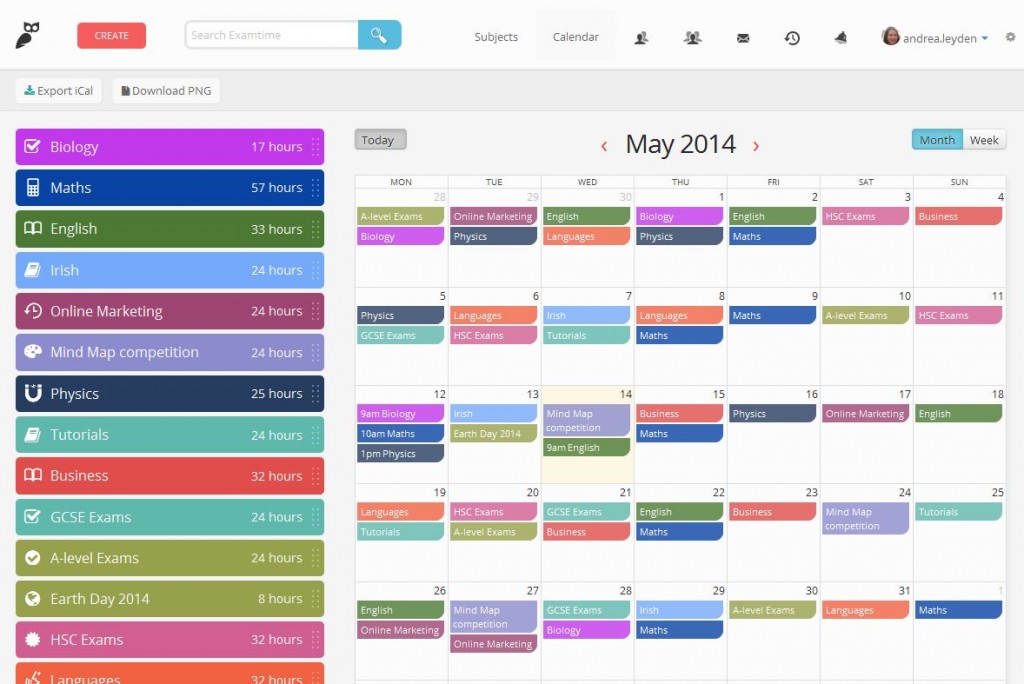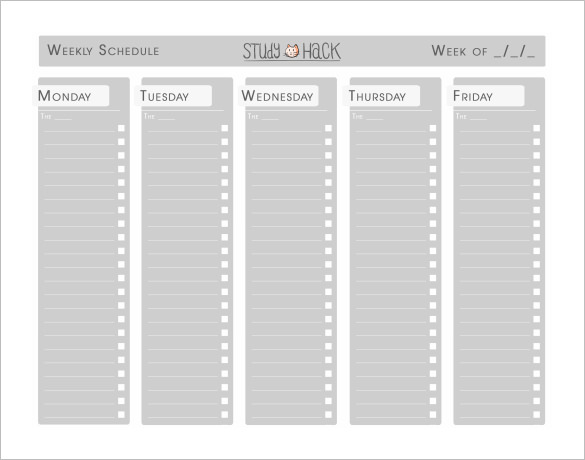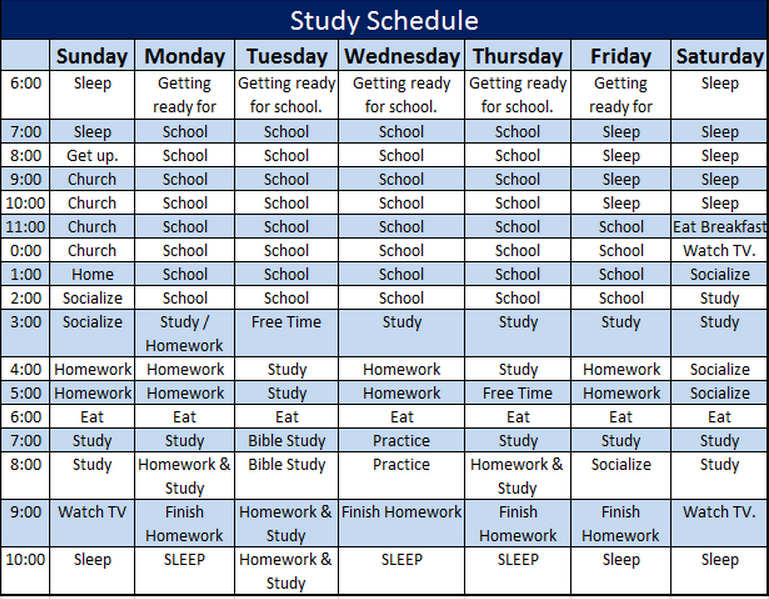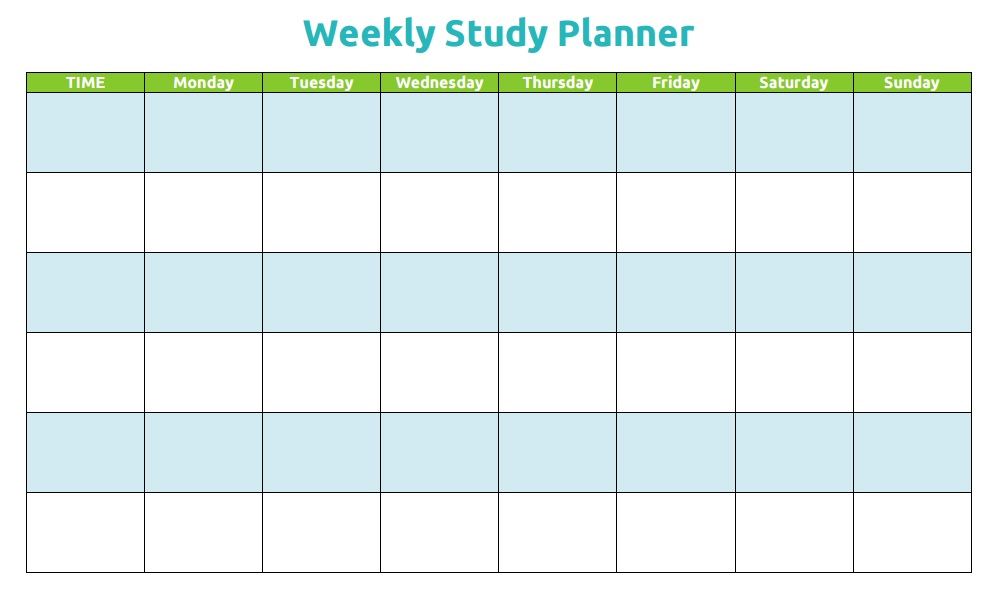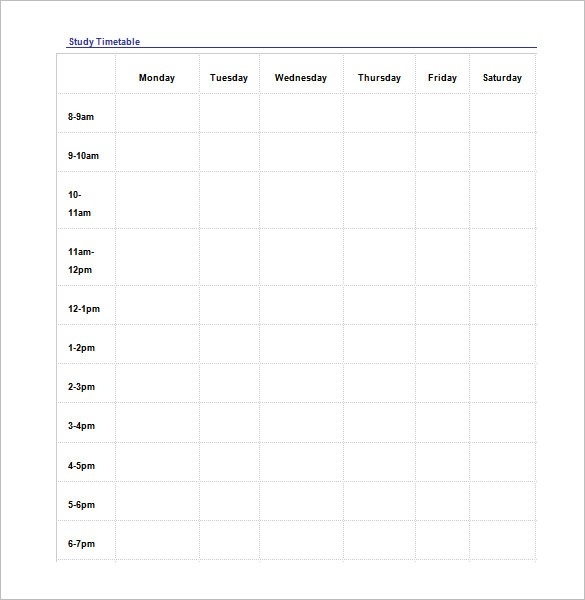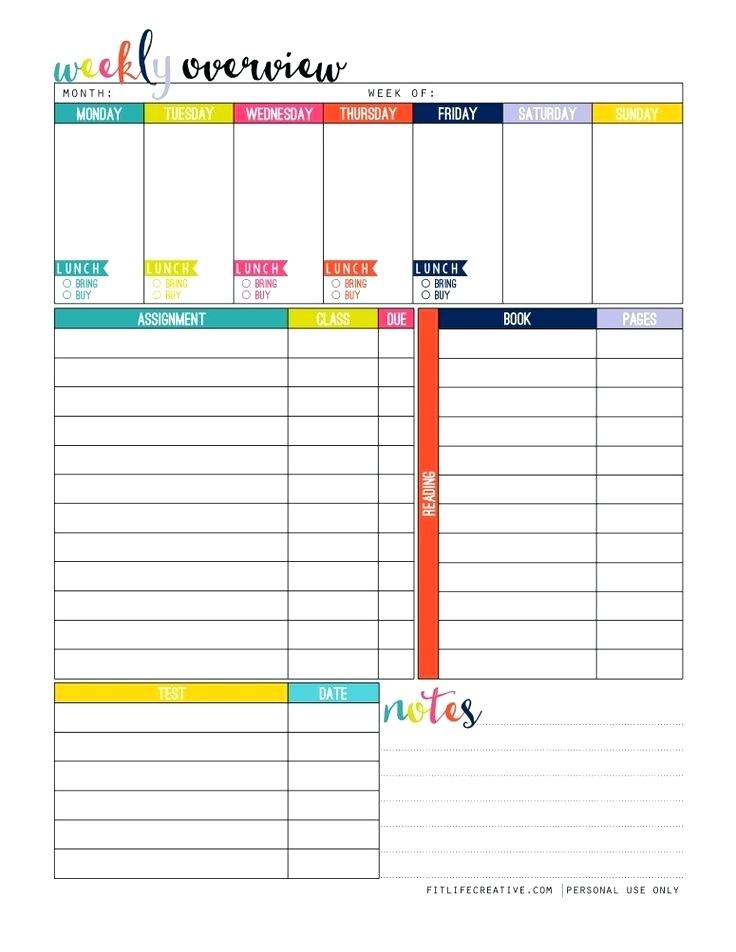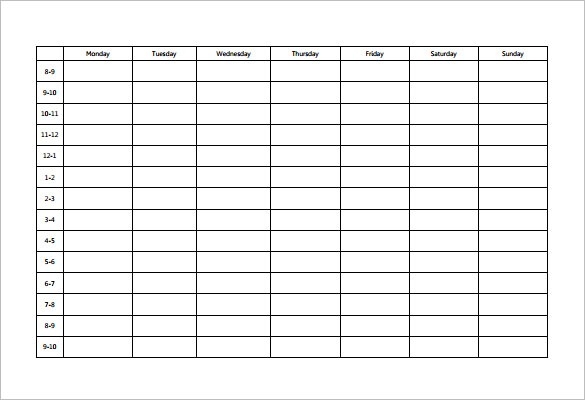11+ Study Planner Examples to Download
A study plan is a personalized schedule organizer that outlines a student’s study times and learning goals. It’s a handy tool for every busy and ambitious scholar that can help them make the most out of their time by focusing their energy and efforts into achieving their academic objectives for the school year. You may also see weekly plan examples.
Developing a study plan where students can reserve days and hours from their usual everyday routine to dedicate to studying can greatly enhance their school performance. It can help you become more organized.
Plus, it can make them more responsible toward your own learning outcomes. Self-discipline is difficult especially if you’re simply going through things as they come. With a study plan, it can be easier to focus on the things relevant to your studies because you are taking the time to divide your daily activities based on your academic priorities. You may also like evaluation plan examples.
Student Study Planner Template
Simple Student Study Planner Template
Creative Personalized Study Plan
Weekly Study Timetable Plan
Weekly Study Plan
Why You Need a Study Plan
Being organized, especially when you’re in college or at the peak of your high school, is necessary. There’s just so much to do before, during, and after school that losing track of your time and study habits is easy. With a study plan, navigating through all your countless school-related activities and duties can be less overwhelming. You may also check out daily plan examples.
Reminders When Creating a Study Plan
Study plans are unique to each student since not everyone has the same timetable. In creating one, you must evaluate your current simple schedule so you can design your study plan in complete accordance to it. You can look for days when you have fewer set commitments so that you can squeeze a little study time in between.
It’s also important to remember that each student is unique, and that each one studies differently from the other. The amount of time you need to study may be twice what your classmate needs, and that’s completely okay. The amount of time you devote for studying must be equal to the amount of time you need. You might be interested in annual plan examples.
Identify your learning goals for each study session to more effectively maximize your time. Instead of simply going through countless books and notes, determine the reason why you are studying. It could be because you want a good grade in general, or it could be that you’re falling behind on a subject, or it could be for an upcoming test. Whatever it is, make sure that you understand this purpose so you can focus your efforts more on achieving them.
Most importantly, make sure that your study plan is reasonable. It’s fine to be ambitious and aim for the highest possible outcome in your study sessions, but this may only deem your endeavor unsuccessful, which is just a complete waste of your time. For example, aiming for five straight hours of studying with no breaks may only set you up for failure. You may also see training plan examples.
You can spend less time studying if you are doing it correctly. Ineffective studying is not better than not studying at all. So make sure that your study plan is not only in line with your professional goals but also with realistic expectations.
Colorful Study Plan Example
Study Hack Weekly Plan
Four Steps to Create a Study Plan
Creating a study plan that can effectively organize your priorities is important for your academic success. Below are steps you can follow to create one that can help you move closer to your goals.
1. Create a time chart for your current activities.
As we’ve already discussed, it’s important that you understand your daily priorities so that you can assess where you can insert at least an hour of study session.
For a one-week period, critically take note of your daily activities and understand how you spend each of your day. Include the record of what you do with your friends, family, at work, at school, and even the time you spend on your hobbies, or eating and sleeping. Every activity that fill your 24 hours must be recorded. You may also see advertising plan examples.
2. Develop a schedule.
Now that you have identified your available days and time for studying, make a mark on your planner or even in your calendar. You can even make detailed notes beside these marks so that you can be reminded every time you look at it. But the best way to keep track of your study hours is by writing them down. You may also like implementation plan examples.
Seeing your general schedule written will make it look even more significant, like a doctor’s appointment that you just can’t miss. It would also be helpful to write down the subjects that you are planning to study during a specific study session, so that you can also equally manage the time you spent on each of your subjects.
3. Determine your study goals.
At the beginning of each week, determine why you need to study and what you plan to accomplish in each class. Maybe you need to focus twice on math because you’re trying to maintain a certain GPA, or maybe English is your strongest subject, so you think its best to study harder on the subject. Whatever the case is, you must at least have a vision of what you want your study plan to help you achieve. You may also check out quality plan examples.
If you have a study session devoted to a short-term goal such as an upcoming test, make sure that you set an appointment for it at least a week or two so that you’ll have plenty of time to prepare for it. If you don’t, however, you can simply spend your study session rereading the materials you’ve previously discussed, or to read ahead on your future lessons.
Your study plan must, most importantly, be tailored depending on your weekly goals so that you can readjust your basic schedule based on the lessons and the subjects that are most important, and must be prioritized at the moment. Make sure that you analyze your study plan depending on what your most important concern is.
4. Stick to your schedule.
There may be days when you’ll be tempted to skip your study sessions for the day especially when there are no upcoming tests looming, and when the TV is on and seemingly calling out for you. But remember that by utilizing this time to read ahead and prepare for tomorrow’s lectures, you can reduce your future test preparation, thus enjoy your time for other things. You might be interested in assessment plan examples.
The only way your study plan will work is if you stay loyal to it. Be consistent. What’s the point of writing it all down if you’ll just leave it unchecked on your bedroom wall? Try to develop a study plan that you can follow through the length of an entire semester, until you eventually develop a natural study habit. You may also see work plan examples.
Reevaluate your study plan every new semester or when there is a big change in your everyday routine, such as extracurricular activities or sports which you will also have to make extra time for. Once your plan is aligned to your daily activities, proceed to trying to sticking to it, which is the most important thing. You may also like financial plan examples.
Study Schedule Plan
Weekly Study Planner
Study Timetable Plan
Strategy to Effective Follow Through Your Study Plan
An excellent way to make sure that you stick to your study plan is to schedule time for other activities. Oftentimes, the reason why people refuse to study is because it interferes with the other activities in their life. (However, sometimes, it’s simply because they find studying uninteresting.) Avoid this excuse by leaving ample time to do the things you want.
By depriving yourself of everything else just so you can study will only make you unhappy and your studying ineffective. Maintain a balance in your life. It’s possible to devote your time on many things at once. It’s all about managing your activities and effectively dividing your time. You may also see action plan examples.
Avoid scheduling several simultaneous days of long studying because this will only make you want to give up. Leave some time for nonacademic-related activities such as exercise, sports, or socialization. Also, when you are studying, make sure that you take breaks so that you don’t feel too overwhelmed. You may also like event plan examples.
Study partners are also always a ready option. Some people function better when they are working alongside somebody else. If you think that this concept will work for you, then go find yourself a study partner who is as equally motivated as you are. But make sure that he doesn’t slow your pace or hinder you from achieving your goals. A study partner should be someone who can encourage you to stay on the task.
When you’re studying with a classmate, you can collaborate, exchange opinions, and even conduct informal discussions which can be helpful in understanding and remembering your lessons better, especially those you have a particularly difficult time understanding. When creating your study plan, try checking out with other students to determine if you can coordinate study sessions with them. You might be interested in sales plan examples.
Different Types of Learning Styles
As a student, its important that you understand what kind of learning style is most applicable to you so that you can practice a study habit that can cater to your identity as a learner. Simply reading your notes and school books is not enough. Understanding the type of learner and the type of learning style appropriate to you is essential to make the most out of your study session. You may also check out transition plan examples.
Below are the five types of learning styles:
1. Visual Learner
A visual learner will learn best through the use of pictures and the presence of other visual elements (such as flashcards). Images and spatiality gives you a better grip on things.
2. Aural Learner
An aural learner understands things better when he hears and listens to them. For example, listening through a teacher discussing different learning styles can make them understand the topic better than by reading this article. Music and sounds are also helpful to them while studying, although it serves as a distraction to others. Classical or instrumental music can highly maximize their focus. You may also see personal strategic plan examples.
3. Verbal Learner
This type of learner, on the other hand, is naturally confident in writing words or using them for speech. Extensive reading also works best for verbal learners. They are inherently close to words. Repeating out loud all the details that they remember is helpful to make them retain the information longer. You may also like behaviour management plan examples.
4. Physical Learner
A physical learner would rather use his body, or touching things while he is studying. He would also much rather focus on the feelings he gets while trying to learn something. For example, simply reading this general article on his computer may not be the best learning option for him. But if he prints this out and holds the paper in his hand can make him understand it better.
5. Logical Learner
Creating systems and looking at things logically is a logical learner’s initial response to everything. He is most often a very reasonable person. Mind maps and index cards are his best buddies since they help him create a structure of the things he is trying to learn. You may also check out audit plan examples.
By understanding what type of learning style is best suited to you, you can stop aimlessly silently reading through an entire chapter’s worth of lessons when you are, in fact, an auditory learner. It can help you identify what you need to do to more effectively go through your lessons. You might be interested in meal plan examples.
Two Types of Learners
Once you have identified the type of learning style that works best for you, determine next what time of learner that you are. There are two types:
1. Solitary Learner
A solitary learner, as its name suggests, can work best when alone. He can understand the material better when he goes through it by himself.
2. Social Learner
A social learner functions more effectively when surrounded by other people. Unlike the solitary learner who can learn a material quicker when perusing it alone, a social learner can study better if he discusses the topic with a group so that they can review each other afterward. You may also see emergency plan examples.
Weekly Overview of Study Plan
Basic Study Plan Example
In order to create a good study schedule, it is absolutely necessary that you understand what type of learner you are. With a good study plan, you can be assured that you always have the time to study. After all, you planned every session ahead. You may also see making a lesson plan with examples.
But by identifying what type of learner you are and understanding the learning style that will work best for you, you can make the best use of your study session by using the appropriate materials you need for learning.


